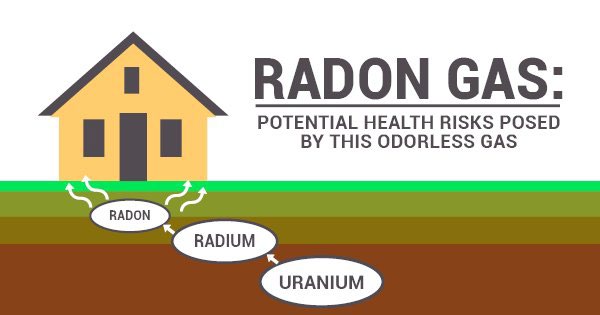Radon: The Ghostly Threat in Your Basement
Oct 14, 2024
Radon quietly seeps into homes, often without homeowners even knowing it’s there! It may even be in your home…
While radon is a threat everywhere, basements are especially vulnerable due to their proximity to the ground. Despite the dangers, many people are unaware of the legal guidelines or safety measures necessary to protect themselves.
In this post, we’ll explore what radon is, why basements are more prone to it, and the regulations you should know to keep your home safe.
What is Radon? Understanding the Invisible Gas
Radon is a complex threat to your home because of its underground origins, invisible and odorless appearance, and silent nature. Understanding where Radon comes from, and the health risks it poses may just encourage you to start testing regularly…
Radon’s Origins: Radon is a naturally occurring radioactive gas that forms when uranium – found in soil, rock, and water – breaks down over time. This decay process releases radon, which then seeps through the ground and into the air. Since uranium is present in varying concentrations beneath the Earth’s surface, radon levels can fluctuate depending on your geographic location. In New England, granite deposits are prevalent, and a top source of radon gas.
Radon’s Appearance: Radon is a colorless, odorless, and tasteless gas, making it impossible to detect with the human senses. Its presence in homes, especially in basements and other low-lying areas, can go unnoticed for years. This ghost-like quality is what makes radon so dangerous—many people live with elevated levels in their homes without realizing they’re at risk.
Radon’s Health Risks: Long-term exposure to elevated radon levels can lead to serious health problems, lung cancer the most severe. In fact, radon is the second leading cause of lung cancer after smoking. Because it builds up over time in enclosed spaces like basements, extended exposure increases the risk of developing health issues, even for non-smokers.
Why Basements are More Prone to Radon Accumulation
Basements are a prime entry point for radon, as they are located directly below ground level where the gas forms. Due to poor ventilation and pressure differences, radon can easily accumulate in these underground spaces, creating hazardous conditions.
Proximity to the Source: Built directly into the ground, basements are literally surrounded by the natural source of radon—soil and rock. As radon is released from the breakdown of uranium underground, it seeps up through the soil and enters basements through cracks, sump pits, and other openings. This proximity makes basements particularly vulnerable to high radon concentrations compared to upper floors.
Poor Ventilation: Basements typically have less ventilation than other parts of the home, often closed off or having fewer windows. This lack of airflow means that once radon enters, it tends to stay and accumulate over time. With nowhere to escape, the radon levels can build up to dangerous levels, especially during colder months when windows and doors remain shut.
Pressure Differences: The air pressure inside of a basement is usually lower than the pressure in the soil around it, which creates a vacuum-like effect. This negative pressure pulls radon gas from the ground into the basement through cracks in the foundation or other small openings. The pressure difference essentially “sucks” radon into your home, increasing its concentration in underground spaces.
Legal Requirements and Regulations for Radon
To protect homeowners and renters, federal and state regulations outline acceptable radon levels and mandate testing in certain situations. Understanding these guidelines and laws can help ensure your home complies with safety standards and avoid unnecessary health risks from radon exposure.
Federal Guidelines: No level of radon is considered completely safe, so the U.S. Environmental Protection Agency (EPA) has set an action level of 4 picoCuries per liter (pCi/L) of air as the threshold for radon.1 Levels above 4 pCi/L require immediate mitigation. Whether your home has a history of radon or not, we advise you to test for radon and take corrective actions if levels exceed this limit to reduce the risk of lung cancer and other health issues.
State-Specific Guidelines: Many states have their own radon regulations that may include mandatory testing during real estate transactions, or guidelines for landlords to disclose radon levels to tenants. Some states also offer financial assistance or tax credits for homeowners who need to install radon mitigation systems. For resources on your state’s radon guidelines, please visit the EPA’s website.
Disclosure Laws for Sales and Rentals: In many states, sellers are required to disclose known radon levels to potential buyers before a home sale. Similarly, landlords may be obligated to provide radon test results to tenants or ensure that rental properties meet acceptable radon standards. These laws help protect renters and buyers by making sure they are informed about potential radon risks before moving into a home.
Protect Your Home from the Silent Threat of Radon
Radon may be invisible, but its dangers are real and potentially life-threatening. By understanding how radon enters your basement, the risks it poses, and the legal requirements in place, you can take proactive steps to safeguard your home and health. Regular testing and mitigation efforts can keep this ghostly threat beneath your feet from becoming a serious hazard.

